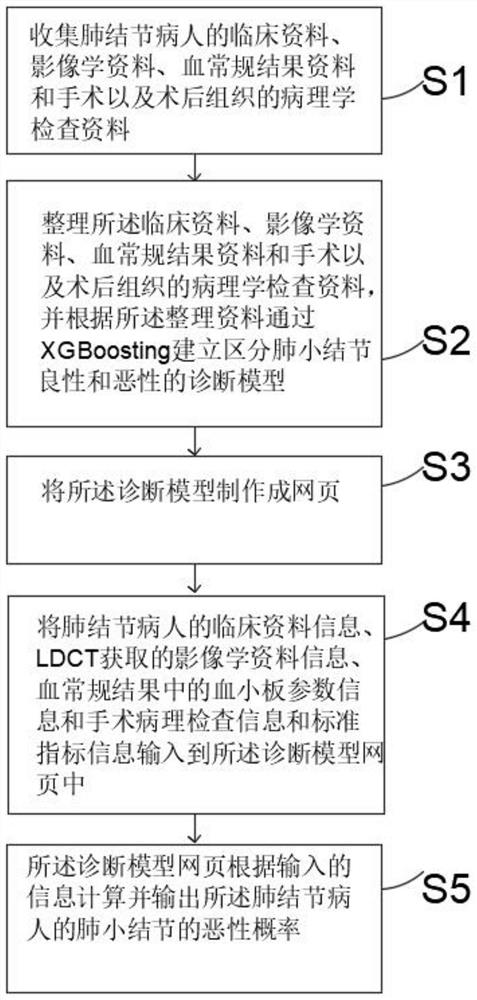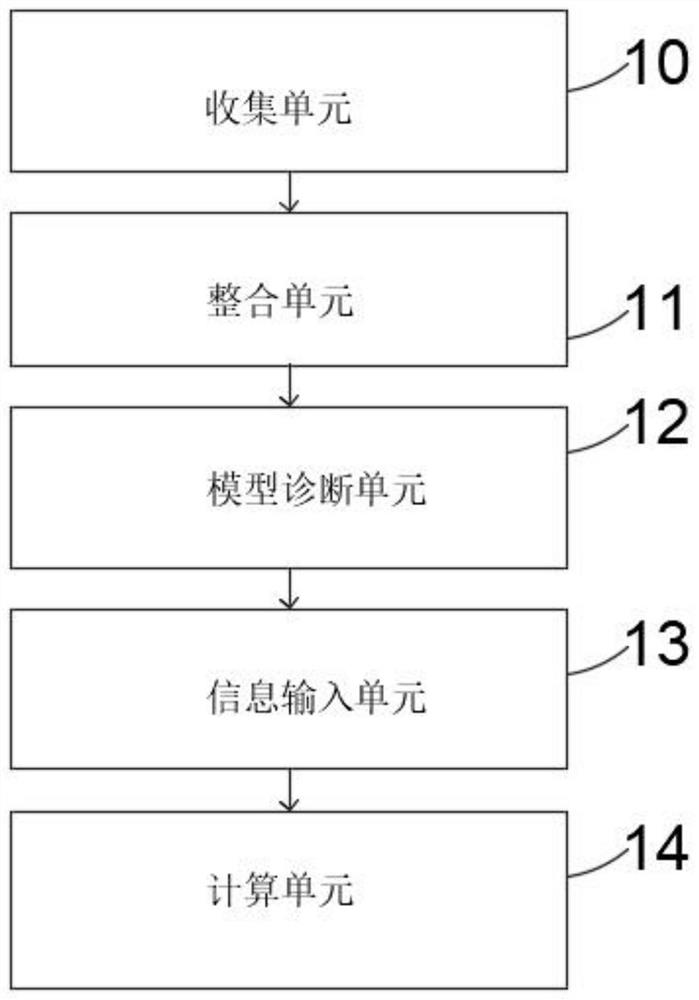Model and system for predicting benign and malignant pulmonary nodules based on platelet parameters
A technology of platelets and small nodules, applied in diagnostic recording/measurement, medical science, sensors, etc., can solve problems such as high requirements for instruments and personnel, limited effect in remote areas, prone to false positives in diagnosis, etc., to reduce excessive medical treatment , reduce surgical treatment, and improve the effect of diagnostic value
- Summary
- Abstract
- Description
- Claims
- Application Information
AI Technical Summary
Problems solved by technology
Method used
Image
Examples
Embodiment
[0033] Such as figure 1 As shown, the present invention provides a model for predicting benign and malignant pulmonary nodules based on platelet parameters, which is characterized in that it comprises the following steps:
[0034] S1. Collect clinical data, imaging data, blood routine results data, surgery and pathological examination data of postoperative tissues of patients with pulmonary nodules;
[0035] S2. Organize the clinical data, imaging data, blood routine results data, and pathological examination data of the surgery and postoperative tissue, and establish a diagnostic model for distinguishing benign and malignant pulmonary nodules through XGBoosting according to the collated data;
[0036] S3. Making the diagnostic model into a web page;
[0037] S4. Input the clinical data information of the pulmonary nodule patient, the imaging data information obtained by LDCT, the platelet parameter information in the blood routine results, the surgical pathological examinati...
PUM
 Login to View More
Login to View More Abstract
Description
Claims
Application Information
 Login to View More
Login to View More - R&D
- Intellectual Property
- Life Sciences
- Materials
- Tech Scout
- Unparalleled Data Quality
- Higher Quality Content
- 60% Fewer Hallucinations
Browse by: Latest US Patents, China's latest patents, Technical Efficacy Thesaurus, Application Domain, Technology Topic, Popular Technical Reports.
© 2025 PatSnap. All rights reserved.Legal|Privacy policy|Modern Slavery Act Transparency Statement|Sitemap|About US| Contact US: help@patsnap.com


